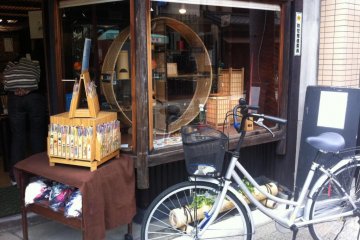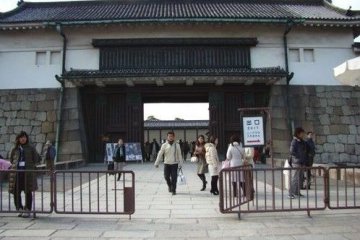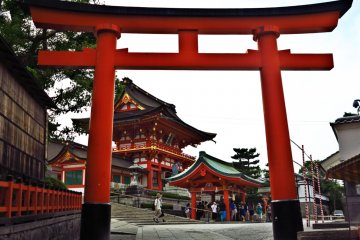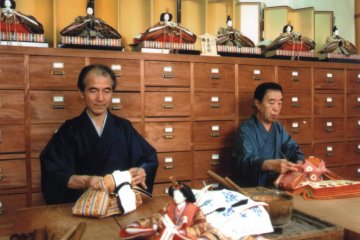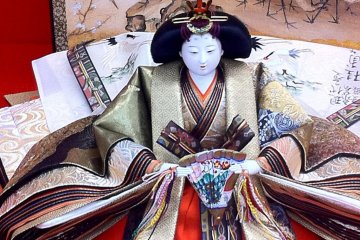Would you like to be the doll maker to the King of Thailand? How about the Imperial Palace in Tokyo? What about the idea that you and your children and your grandchildren be the preservers of this tradition for this unique Japanese handicraft? Or that you have a small army of servants working around the clock to make each doll, paint each eye, design, select and sew each kimono?
Today I was blessed to be given this opportunity to enter the previously closed world of royalty. If only I could shrink myself to a Japanese doll (Ningyou) and be presented to the King. Even if I could not get into the presence of the Emperor I can still get an insight into royalty within the showroom. In the tradition of Hina Matsuri, or doll festival, the top two dolls on the presentation platform (hina dan) represent the Emperor (Odarisama) and Empress (Ohinasama).
Kyoto is known as the center of handicraft design since it was founded in the Heian period in 794. Many of these handicrafts such as folding fans, and dolls are featured in the Tales of Genji, the oldest written novel in the world and Kyoto's most famous novel.
While the capital had since moved from Kyoto to Tokyo, the legacy of handicraft making for the imperial family lives on in the quiet Kyoto townhouses (Machiya) tucked in the back streets just a few blocks from the original Imperial Palace in Central Kyoto.
After being granted a private audience with the owner Ando san, I got to see the doll makers in the upstairs workshop. As doll making requires many different skills, from kimono making to face painting to hairdressing, these tasks have been designated to different specialist masters. The rolls of kimono cloth in particular are a delight to behold, especially as they are especially made for the dolls as they are on a smaller scale than people. I am also amazed at how they can transform raw silk strands into so many different kinds of hair they use to for their dolls, and how perfectly the hair is combed. I can only imagine how many years of training are required to master these skills Looking around the showroom I am mesmerized by how delicate and exquisite the features are on these dolls, from the refined fingers to the floral and classical patterns of each fold of kimono sleeve. An Ohinasama doll has 16 different layers of kimono. So when you are invited to the imperial wedding, look out for each of the 16 layers.
Luckily these Ohinasama dolls are also available for purchase, and they make a wonderful gift for a very special person or occasion. You can even dress your own doll by booking an “Ichimatsu Doll Fitting Experience” where you are given a tour of the showroom and workshop, a selection of kimono designs and a personal doll fitting experience, all in two hours.



